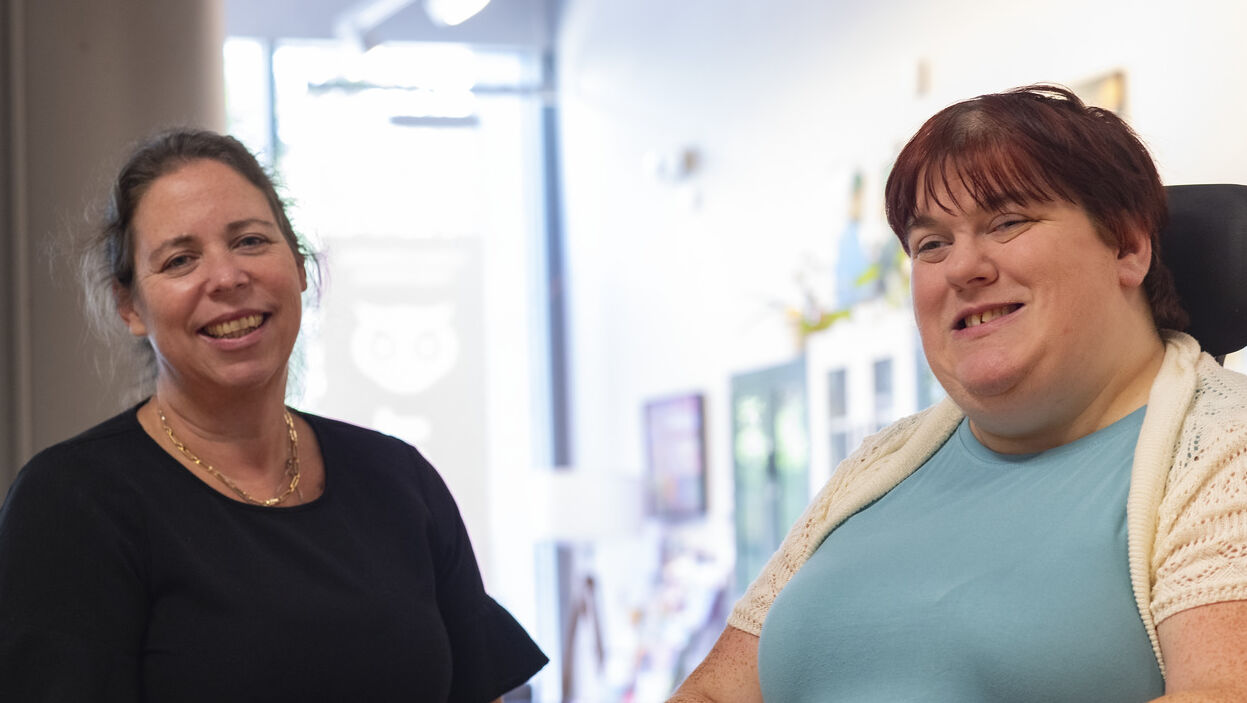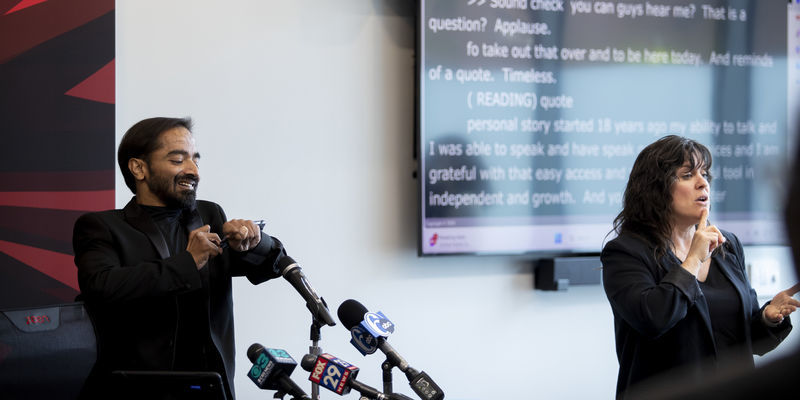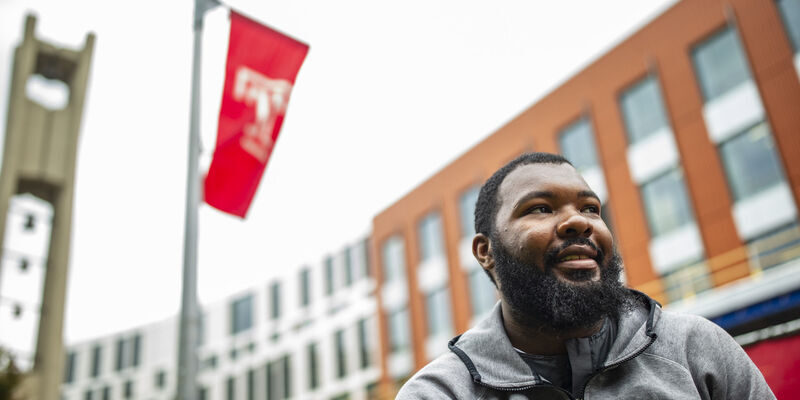Temple experts reflect on the Americans with Disabilities Act (ADA) 35 years later
Sally Gould-Taylor and Shirley Baker from Temple’s Institute on Disabilities explain the significance and impact of the ADA.

On July 26, 1990, the United States enacted the Americans with Disabilities Act (ADA). This federal civil rights law prohibits discrimination against individuals with disabilities.
The law applies to various areas of life and is segmented into five sections known as titles covering employment, state and local government services, businesses, telecommunications, and other important requirements.
In celebration of the 35th anniversary of the ADA, Sally Gould-Taylor, executive director of Temple’s Institute on Disabilities and associate research professor in the Department of Teaching and Learning from the College of Education and Human Development, and Shirley Baker, research associate in the Institute on Disabilities, provide further insight into the ADA and reflect on its impact.
Temple Now: How did the ADA begin?
Sally Gould-Taylor: When reflecting on the ADA, I think about Judy Heumann, universally regarded as “the mother” of the disability rights movement. The passing of the ADA began as Heumann led the historic 504 sit-in protest at a federal building in San Francisco, resulting in the passing of Section 504 of the Rehabilitation Act of 1973. This was the first federal civil rights protection act for people with disabilities that prohibited discrimination in programs receiving federal funding. This piece of legislation was integral to the passing of the ADA more than 20 years later.
Additionally, the Individuals with Disabilities Education Act was signed into law in 1975 and reenacted in 1990, alongside the passing of the ADA. It was meant to guarantee entitlement to free, individualized and appropriate education in the least restrictive environment and permanently established individualized educational plans. It also upheld student-centered support and services and embedded universal access to early intervention evaluations and support for all families.
As a piece of legislation, the ADA moved the disability rights movement from theory to legal federal policy, prohibiting discrimination against people with disabilities in all areas of public life. It was meaningful because it advanced the critical work done by disabled advocates during the 1960s and 1970s. Social change was taking shape in small ways. Some schools were questioning segregated learning, and some local businesses were addressing access needs, but the legal, policy, and system-level changes that the ADA authorized represented the opportunity to move from mitigation to transformation. When George H.W. Bush signed the ADA into law, he established comprehensive legal authority in declaration of equality for people with disabilities.
TN: What does it mean to celebrate 35 years of the act?
Shirley Baker: It’s great to celebrate 35 years. Without the ADA, we wouldn’t have access to the same things that other people do. We’ve come a long way, and the law has helped my life as someone who uses a wheelchair. The ADA has caused businesses to realize there are protections for people with disabilities, which has brought more voices to the table. It’s allowed a lot of doors to be opened, and I hope it allows things to continue becoming more accessible.
Gould-Taylor: Personally and professionally, I believe it is an important day to celebrate. I focus on supporting people with disabilities to honor and reflect on the anniversary in a way that’s meaningful to them. It’s a time to acknowledge the hard work of the disability rights movement advocates. It’s also a way to raise awareness that addressing inclusion still matters and that barriers remain. Declaring equality was important, but it’s only one phase in the process. This anniversary helps people think about how to talk about ableism, consider disability etiquette and create spaces for inclusive community engagement. It’s an opportunity to reflect on progress and prioritize advancement. This year, I am thinking about how I can enhance my own reflexivity and renew my commitment to support disabled leaders.
TN: How has the ADA helped you?
Baker: I remember when few SEPTA buses were accessible. When I was in college, I couldn’t get my wheelchair on certain routes. Now most buses are fully accessible. Also, I don’t have to worry as much about accessibility when going to public places like movie theaters and restaurants. I’ve been able to travel more independently and use more things. Accessibility has come a long way.
TN: What more can be done to further protect or support individuals with disabilities?
Gould-Taylor: Although the ADA created a system of legal accountability, we need to create access beyond compliance. I work to seek funding, create programs, and conduct inclusive, community-engaged research in partnership with disabled experts and community organizations. My work responds to the authentic needs expressed by the diverse disability communities in Philadelphia and across the Commonwealth. I support their current priorities to advance unbounded access, universal design, and permanent redistribution of access and opportunity.
Issues also remain with the enforcement and accountability of the ADA. For example, legislation is often enacted to support the rights of someone with a physical disability while simultaneously limiting those same rights for a person with an intellectual or developmental disability.
The limitations that were established when the ADA was first signed into law have unfortunately resulted in increased discriminatory practices in some specific disability categories.
Additionally, many housing options remain out of ADA compliance and inaccessible, especially in the affordable housing market.
The Institute on Disabilities is aiming to improve our approach to addressing principles of intersectionality that were left out of the ADA. We seek to deepen our engagement in programmatic, service and evaluative projects that center the lived experience of multiply marginalized people with disabilities and incorporate equity-based approaches.
It's important to ensure that the strategic priorities of Temple and our city center around unbounded access and creating a place of belonging for individuals with disabilities. At Temple’s Commencement ceremony, the university went above and beyond ADA compliance, which is such a good indication of how Temple is representing universal design. That’s the way we’ll move from the disability rights that framed the ADA into disability justice that won’t just give people equity but principles allowing them to strive, belong, and be part of the framework of an institution, city and country.
Also read
The Institute on Disabilities: Temple University’s Institute on Disabilities learns from and works with individuals with disabilities and their families in diverse communities across Pennsylvania. The institute, housed in the College of Education and Human Development, creates and shares knowledge, changes systems and society, and promotes self-determined lives. Learn more.
The College of Education and Human Development: Driven by research and a mission to empower children and their communities, the College of Education and Human Development creates new models of teaching and learning to equip graduates with the tools to strengthen education practices and address the needs of today’s schools. Read more.
Become an Owl: Learn more about applying for one of our undergraduate, graduate or professional programs.


